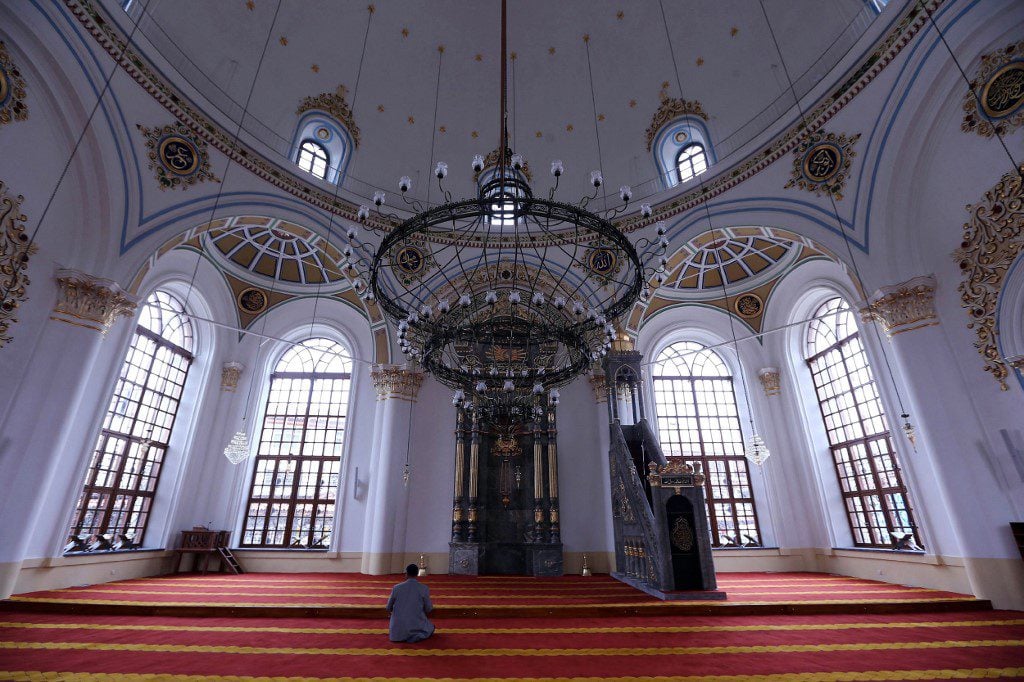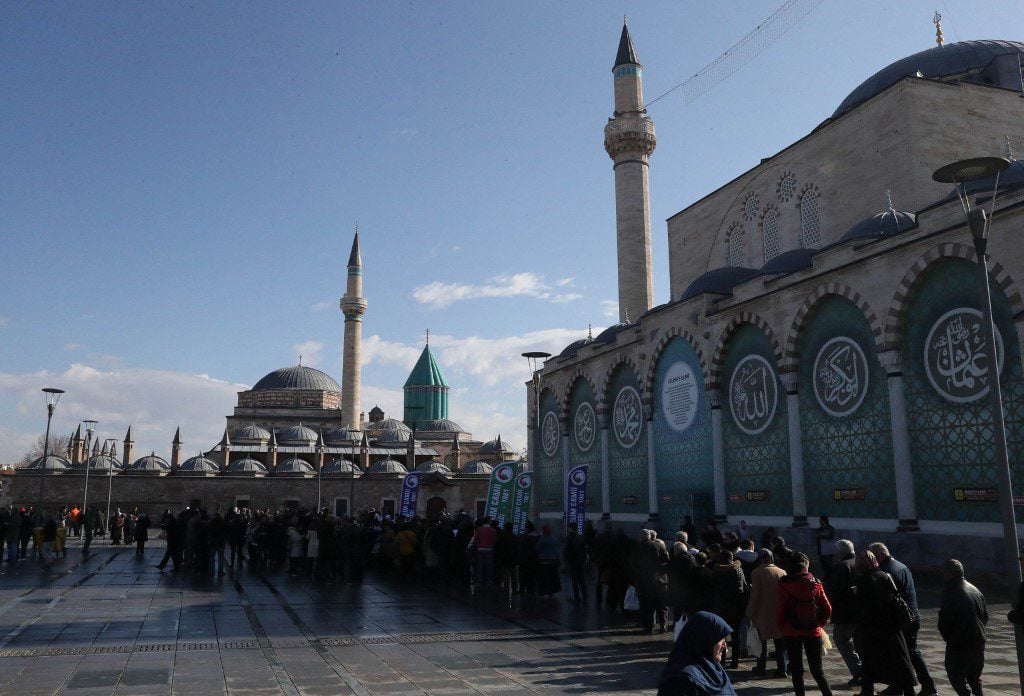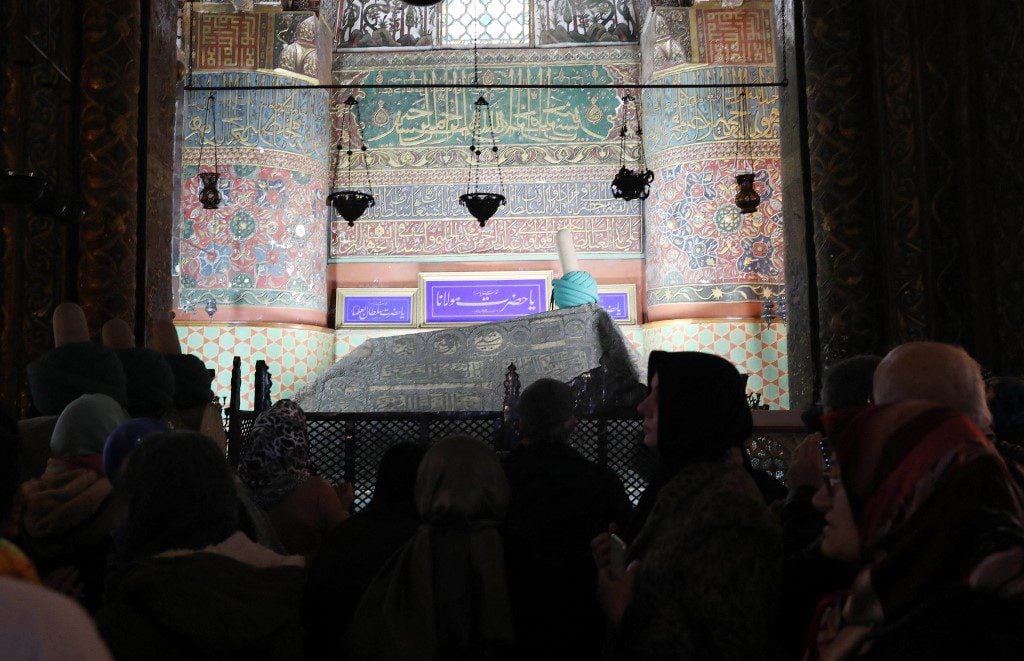
Camille-Jean Helou
The prominence of historical sites in Sufi-oriented tourism may give the impression that Sufi architecture is a distinct category of building, with its own esthetic language and approach to spatial design. But reality is often more nuanced than one’s initial assumption, especially when it comes to matters of culture and history.
In truth, Sufi architecture in modern-day Turkey, is Muslim-Ottoman architecture. The two are technically indistinguishable, apart from their historical association with Sufism, or lack thereof. But at the same time, Sufi traditions and ideological tenants did have a major influence on Ottoman culture. So their impact on art and architecture is undeniable.
When studying historical architecture, it is crucial to keep in mind that distinctions of style, period, and movement, are for the most part modern inventions born from an academic need to define and classify. This way of thinking would have seemed entirely foreign to builders of the tenth to fifteenth century. For them, architecture was a continuously evolving art form, evolving in accordance with certain agreed-upon intrinsic principles.
First and foremost, architects wanted to make buildings that functioned in the way they thought was best. In doing so, they automatically built into their designs a testament to the way they saw the world (a cultural snapshot of a moment in history). They weren’t trying to adhere to the rules of the time or the region. They themselves were setting those rules, inadvertently, in their competitive pursuit of architectural greatness.
Architects with a state, a faith and a culture in common, erected similar structures, because they were building upon similar influences. In retrospect, we may refer to these structures by an umbrella-term, but at the time, everyone was simply striving to achieve the best expression of God’s greatness, built in stone.
Arguably, the most iconic instance of Sufi architecture is the Rumi’s mausoleum, currently the Mevlâna Museum, in Konya, Turkey. Instantly recognizable by its tall cylindrical dome of bright turquoise, the compound was first a place of interment for Rumi’s father, installed at the site of Sultan Ala al-Din Kayqubad’s rose garden (1231). Decades later, the Persian Sufi mystic was himself buried there, beside his father (1273).
The site was expanded upon in stages after Rumi’s death. Sections were added until 1854. For a while, it also functioned as a Tekke of the Mevlevi order, a lodge for the iconic whirling dervishes, until 1926, when it was decreed a museum. Today, it is one of the most visited touristic locations in the region, certainly a prime destination for Westerners fascinated with Sufi rituals, and lovers of Rumi’s writings.

Sufism is a vast mystic tradition stemming from Islam, popular around the world for its emphasis on love, tolerance, and equality. In the eyes of the West, its embrace of multiculturalism and inter-faith dialogue stands in direct contrast with the militaristic Islam often depicted on mainstream media, a seductive glimmer of hope in an otherwise disheartening religious landscape.
Renowned poet Jalal ad-Din Muhammad Rumi is considered by many to be the foremost representative of Sufi mysticism, being by far its most famous adept (though partly because his works were edited by Western scholars to be more palatable to Western tastes).
The Mevlâna Museum is a prominent example of 11th century Ottoman architecture. Before entering the compound, the visitor is met with mute austerity. Wide rugged outer walls dotted with narrow barred windows give an impression of density and resilience. Upper walls get gradually shorter, and retreat inwardly (for structural reasons), terminating in low domes that get progressively larger towards the center (a direct consequence of the way internal functions are laid out).
The building’s proportions resemble a stout hill of unpolished stone. Nothing from the outside prepares the visitor for the sophisticated opulence that can be found within. Nothing except for the stunning tall dome of the mausoleum, clad in blue-green tiles, and shaped like a rocket pointed at the heavens.
The main gate leads to a marble courtyard, surrounded by the living quarters of dervish monks, each a square cell, with a small dome for a roof, standing side by side to form an enclosed perimeter. Running water passes through a traditional washing-fountain, at the center of the space, an impressive engineering feat.
Straight ahead, stand the four tall arches that indicate the entrance of the main building. Here, masonry work is of noticeably higher quality. Corners are sharp, edges are honed, lines are straight, and colors match. Some stones even interlock like puzzle pieces. Archways are rimmed with marble, columns are crowned with decorative carvings. A great advancement in stonemasonry: the pointed arch, allows for higher ceilings, bigger windows, and thinner columns.
Below a tall archway, a two-leaf door made in 1492, decorated with Seljuk motifs and Persian text leads into the mosque. As is typical in Ottoman architecture of the period, the doorway is indicated by a large imposing recess in the stone wall, ornately carved in such a way as to confuse the visitor’s sense of scale, until they reach the actual door, and find it shorter than expected, though of normal size, in a flat arch of alternating light and dark stone, dwarfed by the giant door-shaped recess in the wall above it. This effect is most likely intended as a subconscious reminder of man’s diminutive stature in comparison to God.

Inside the mosque, space is subdivided by pillars carrying individual domes. The different functions within are hierarchized by order of importance, using decoration. Thus, the prayer hall is immediately recognized as the focal point of the entire space, since it is entirely clad in rare and precious Ottoman calligraphy, while lobby, dance-hall, and reading-room have their walls and ceiling partially decorated, and partially painted in white.
Just under the arches that carry the roof, extend thin wooden beams from pillar to pillar. This is a traditional stone-reducing measure that allows for larger spaces to be built with less bulky masonry. Throughout the building, the wood is merely treated to resist moisture, and kept exposed. But in important areas like the prayer hall (where the Koran was to be continuously recited), even these thin wooden beams were dressed in intricate mosaic.
To reach the mausoleum section of the building, the visitor must traverse a silver door made in 1599, in a stone archway, surrounded by exquisite woodworking. Located directly beneath the prominent blue-green dome, Rumi’s sarcophagus is a 12th century masterpiece of Seljuk woodcarving, covered with elaborate brocade, and embroidered in gold with verses from the Holy Quran.
All around it, floor, walls and ceiling are utterly saturated with color and ornamental complexity. The technical prowess of Ottoman artisans is in full effect. For religious and cultural reasons decoration had to be comprised of exclusively text and geometry. But no matter the restrictions imposed, the artist’s mind always finds a way to persist in their pursuit of beauty.

On walls and columns, thin lines cast in precious metals, intermingle with expertly carved interlocking stones of many colors, to form a mesmerizing tapestry of stylized calligraphy and flowing uninterrupted patterns. On the ceiling, geometry replicates nature, with floral motifs made of repeating angles. On the floor, remarkably carved stones interlock like puzzle pieces, leaving no visible gap in between, such that a casual observer might have assumed the floor to be a single piece of stone, if not for the diverse coloration of the tiles.
A majestic abundance of warm artistic beauty surrounds the mystic poet’s resting place. A fitting honor for the man who said: “if everything around you seems dark, look again, you might be the light.
Sufism is a complex theological aspect of Islam, with a deep cultural legacy that certainly left its mark on tenth to fifteenth century architecture in Turkey. Sites like the Mevlâna Museum offer greater insight into this still relatively unknown and misunderstood mystic tradition. Like a Sufi practitioner, the site is outwardly set in silent austerity, turned inwardly in the eternal pursuit of oneness with God, contemplating colorful beauty concealed within.

